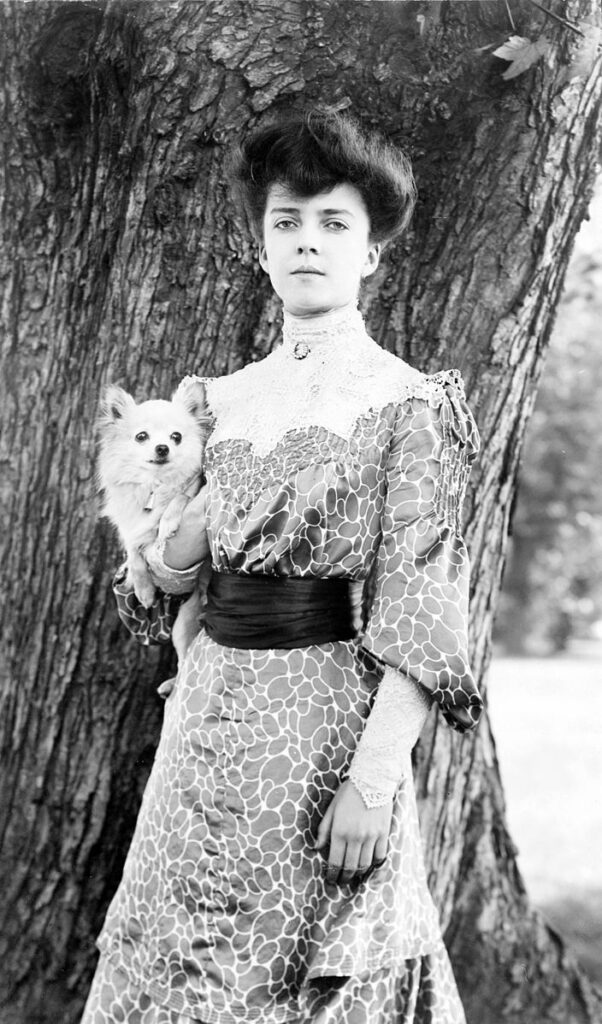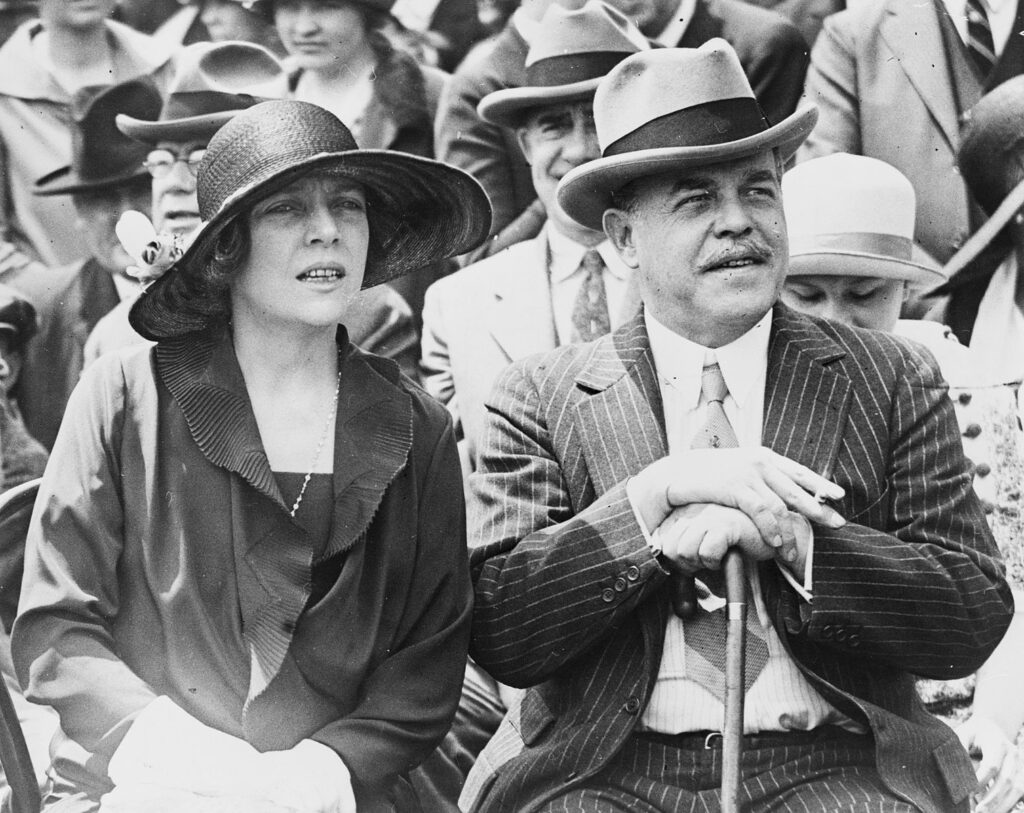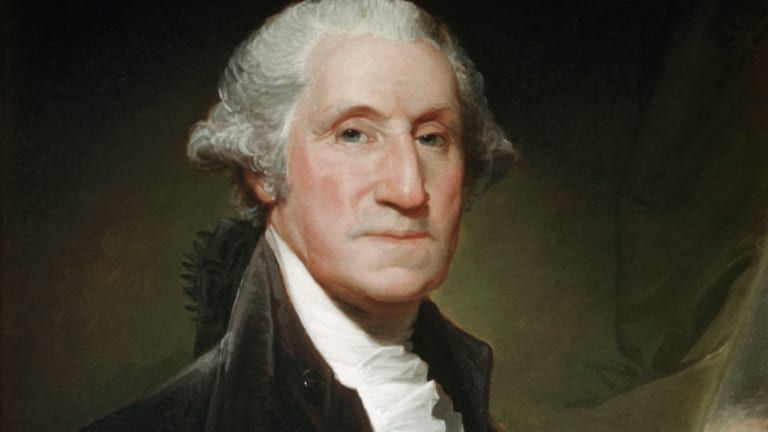Many First Ladies have taken the spotlight away from their husbands. Such as Eleanor Roosevelt, Jackie Kennedy, and Betty Ford. However, there was one president who was outshined by his own daughter.
Alice Roosevelt Longworth was the daughter of President Theodore Roosevelt. She was a prominent figure in social and political circles during the turn of the 20th century.
Alice lived through a period of immense political and social transformation in the country. Her life spanned the late 19th century into the mid-20th century. She witnessed first-hand events such as the Progressive Era, World War I, and the aftermath of the Great Depression.

Early Life and Upbringing
Alice Roosevelt Longworth was born on February 12, 1884, in the bustling metropolis of New York City. She entered the world as the first child of Theodore Roosevelt and Alice Lee Roosevelt.
However, the joy of her birth was short-lived. Two days after his daughter’s birth, Theodore experienced a double loss when his wife succumbed to nephritis just several hours after his mother died of typhoid fever.
Theodore Roosevelt was faced with the challenge of raising a newborn daughter and his other children on his own. In 1886, Theodore remarried to Edith Kermit Carow. She launched into the role of the stern and strict stepmother to Alice and Theodore’s other children.
Vice President’s Daughter
When her father became the Vice President to President William McKinley in 1901, Alice found herself thrust into the heart of American political life. The family moved to Washington, D.C., where they took residence in the official Vice President’s residence at the time, Number One Observatory Circle.
Her vivacious personality and quick wit quickly made her a prominent figure in Washington society. Her presence at events and gatherings became noteworthy.
Despite being the daughter of the Vice President, Alice was not content with merely observing from the sidelines. She actively engaged in discussions and debates – things that society women did not participate in at the time.
Alice’s lively personality and wit gained the attention of Ohio Congressman Nicholas Longworth. The two became acquainted and began to be seen together in social circles around Washington.
Life in the White House
On September 6, 1901, President McKinley was touring the Pan-American Exposition in Buffalo, New York. He was gunned down by an assassin’s bullet.
Eight days later he succumbed to his injuries. Alice suddenly found herself the First Daughter of the United States and the first girl in the White House since Nellie Grant.
The Roosevelts were the Kennedys of their time. They were a young and vibrant family that was adored by the entire nation. Alice’s wit and outgoing nature made her a national treasure that inspired other women during America’s Gilded Age.
Alice captivated the public imagination with her audacious exploits. She became a widely recognized figure in American society.
From smoking on the roof of the White House to betting on horse races, Alice was a flapper before the flapper era. She boldly defied the social norms of the era that were expected of polite society ladies such as herself. The public loved it.
In 1905, Alice Roosevelt accompanied Secretary of War William Howard Taft and Congressman Nicholas Longworth on a diplomatic tour of Asia. The group visited Japan, Hawaii, China, the Philippines, and Korea.
Alice played a special role in representing the United States during these engagements. At this time, rumors started swirling about the nature of her relationship with Longworth.
After returning home from her trip she put all rumors and speculations to bed when she announced her engagement to Longworth in December. The news of Alice’s upcoming marriage to a prominent politician, significantly older than her, caused one of the first media sensations in the United States.
Crowds in New York swarmed as she shopped for wedding items. This prompted the police to shut down streets and control the crowds.
Marriage and Life After the White House
Alice’s marriage to Nicholas Longworth in 1906 was the social event of the year that drew overwhelming public attention. Crowds gathered outside the White House eager to catch a glimpse of the ceremony and the beautiful bride.
After their wedding, as was the custom for the daughters of presidents, Alice moved out of the White House and started her new life with Longworth. The couple moved into a house located at 2007 Massachusetts Avenue. This became a notable social and intellectual center in Washington.
Their home became known for gatherings that brought together the influential movers and shakers of the time. The Longworths’ residence became renowned for its vibrant and intellectual atmosphere, contributing to Alice’s continued prominence in Washington society.

Election of 1912
After vowing not to seek re-election following the end of his second term in 1909, Theodore Roosevelt threw himself back into the political arena. This was due to his dissatisfaction with the direction of the Republican Party.
Instead of running as a Republican, he formed his own Progressive Party. This became known as the Bull Moose Party.
The rivalry within the Republican Party between Roosevelt and his former friend and Secretary of War, William Howard Taft set the stage for a contentious presidential race. Theodore Roosevelt ran a hard campaign. He championed progressive ideals and challenged the established political order.
But despite his hard-fought battle, neither Roosevelt nor Taft won. The election ultimately resulted in the victory of Woodrow Wilson, the Democratic candidate.
Resentments and Family Drama
Following Woodrow Wilson’s victory over her father, Alice’s resentments toward Wilson grew. This led her to vocally oppose the League of Nations, a key component of Wilson’s post-World War I diplomatic efforts.
Alice characterized the League of Nations as a threat to national sovereignty. She intensified her efforts to challenge Wilson’s initiatives.
Her critical stance wasn’t limited to Wilson. It extended to her relatives as well. Franklin D. Roosevelt, her fifth cousin, faced harsh criticism from her during the Great Depression for his New Deal policies.
Amid the 1940 presidential campaign, Alice didn’t shy away from expressing her bold and controversial views. In a highly publicized statement, she declared that she would “rather vote for Hitler than vote for Franklin for a third term.”
This provocative remark showcased her disdain for the idea of a third consecutive term for her cousin Franklin D. Roosevelt. As the 1944 election approached, Alice once again entered and threw her wit into the political arena.
During Republican nominee Thomas Dewey’s candidacy, Alice didn’t hold back. She skillfully employed humor as a weapon. She likened Dewey’s distinctive pencil-thin mustache to “the bridegroom on the wedding cake.” This created a vivid and lasting image in voter’s minds that he never recovered from.
Personal Loss and Later Life
On April 9, 1931, Nicholas Longworth suffered a fatal stroke while attending a session of the Supreme Court. This sudden and unexpected event left Alice alone to raise their only daughter, Paulina, who was six years old at the time.
Paulina grew up struggling with mental health issues and tragically took her own life on October 10, 1957, at the age of 31. Following her daughter’s death, Alice was granted custody of Paulina’s daughter, Joanna.
Alice maintained her role as a social and political commentator throughout the following years. She offered sharp insights and personal experience.
She continued to host influential salons at her residence, where intellectuals, politicians, and cultural figures gathered to discuss and debate current affairs.
The Kennedys and the Modern Political Landscape
When the Kennedys rose to power, it brought a new era to American politics. Alice, who had witnessed various presidential administrations, was enamored with the family that reminded her of her own growing up.
Although she was friendly with the Kennedys, she did not support them politically. She had formed a friendly relationship with Richard Nixon during his vice-presidential tenure under Eisenhower. He even served as a pallbearer at Paulina’s funeral in 1957.
Despite Nixon’s electoral setbacks, Alice supported and encouraged his return to politics. Even after the assassination of John F. Kennedy, Alice continued to support Richard Nixon in his 1968 and 1972 elections.
Death and Legacy
Alice Roosevelt Longworth left a lasting legacy. She was a trailblazing figure in American political and social history.
Her remarkable life allowed her to bear witness to a staggering 17 presidential administrations, spanning from Benjamin Harrison to Jimmy Carter. She lived through the tumultuous periods of two world wars and the tragic assassinations of two U.S. presidents.
She witnessed the transitions of power of Queen Victoria, Edward VII, George V, Edward VIII, George VI, and the early years of Elizabeth II.
Her friendships and connections with famous political figures, from the Kennedys to Nixon, underscore her ability to transcend party lines and maintain relationships across the political spectrum. Her sharp and often satirical humor not only entertained the public but also got them more interested in the political process.
Alice Roosevelt Longworth lived to the ripe old age of 96. She passed away on February 20, 1980, from complications related to pneumonia.
References
Alice Roosevelt Longworth
https://www.britannica.com/biography/Alice-Roosevelt-Longworth
Alice Roosevelt Longworth
https://en.wikipedia.org/wiki/Alice_Roosevelt_Longworth#
From a White House Wedding to a Pet Snake, Alice Roosevelt’s Escapades Captivated America

